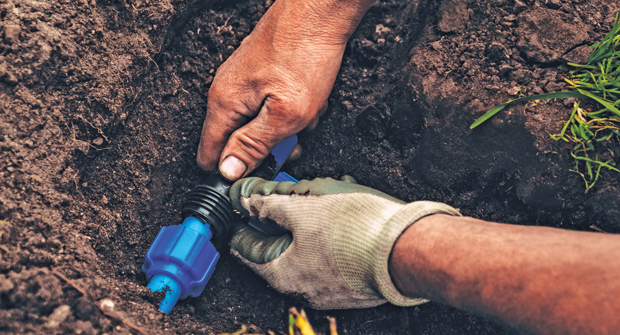
 The Irrigation Association (IA) expounded on the contrasts and benefits of the U.S. Green Building Council’s Leadership in Energy & Environmental Design v4 (LEED) rating program and the Green Building Initiative‘s Green Globes rating program, both of which the U.S. General Services Administration approves as standards for green buildings.
The Irrigation Association (IA) expounded on the contrasts and benefits of the U.S. Green Building Council’s Leadership in Energy & Environmental Design v4 (LEED) rating program and the Green Building Initiative‘s Green Globes rating program, both of which the U.S. General Services Administration approves as standards for green buildings.
The IA’s analysis is as follows.
Like LEED, Green Globes rates the sustainability of a building’s design, construction and maintenance, including landscape and irrigation systems. Overall, LEED allocates a larger percentage of total available points to areas relevant to the landscape and irrigation industries. Under LEED, points for landscape (eight points out of 110) and irrigation and water efficiency (three points) account for 10 percent of the total. The Green Globes system allocates only 5 percent of available points to landscape (42 points out of 1,000) and irrigation (12 points).
In contrast to trends in the field, where the focus has been reducing potable water use for irrigation, LEED and Green Globes award the most points to projects that require no irrigation or significantly reduce the irrigated landscape. For example, under LEED, projects receive additional points for requiring no irrigation or reducing landscape water use by 50 percent or more (as determined by the U.S. Environmental Protection Agency’s WaterSense water budget tool).
For Green Globes, at least 25 percent of the project’s landscaping must be non-irrigated to earn points, with additional points awarded for further reductions in irrigation use. Unlike LEED, Green Globes does award points for using non-potable water, water harvested onsite or sub-meters for potable water systems. Projects also can earn points under Green Globes for using drip irrigation, WaterSense-labeled products or those tested under the Smart Water Application Technologies (SWAT) protocols, and swing joints or flex pipes for in-ground sprinklers.
Click here for a summary of LEED and Green Globes in the form of table.

